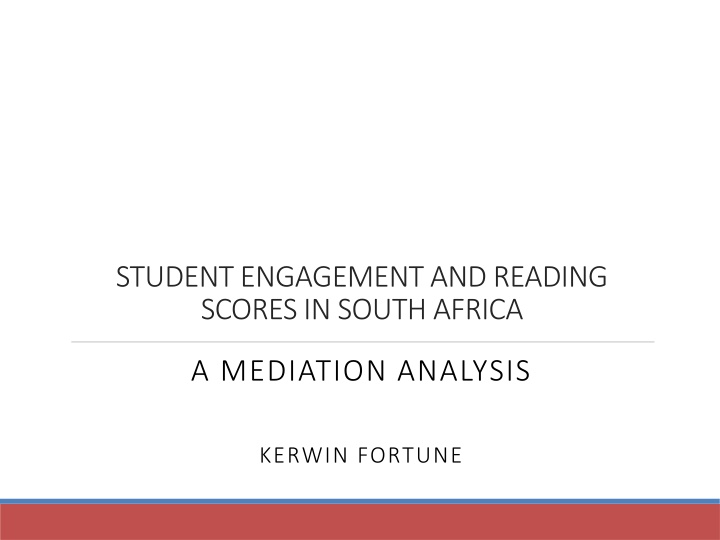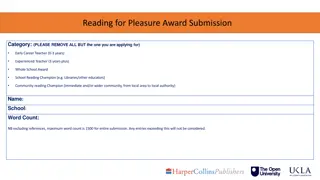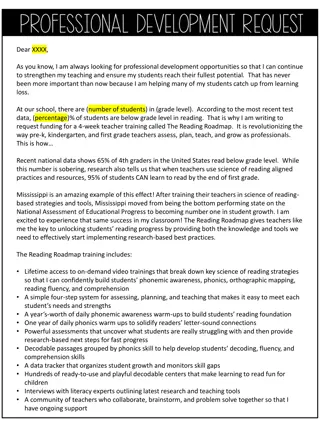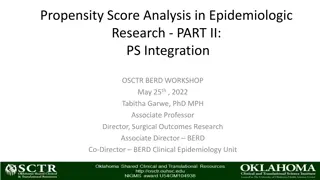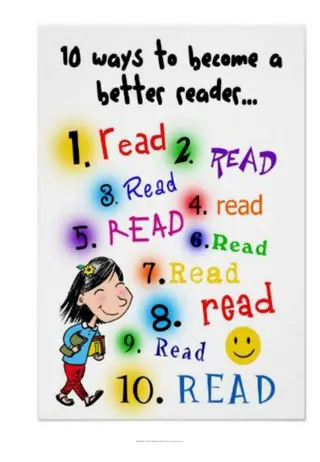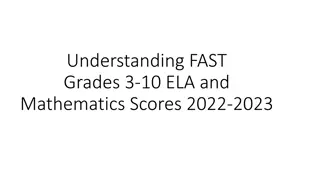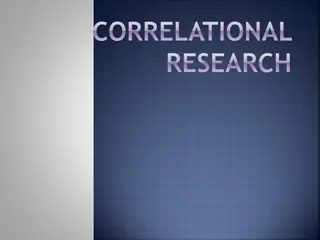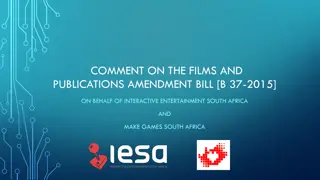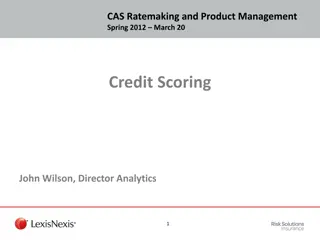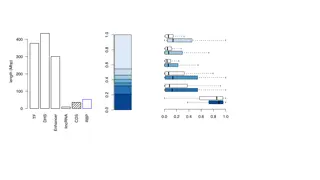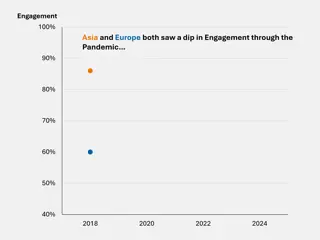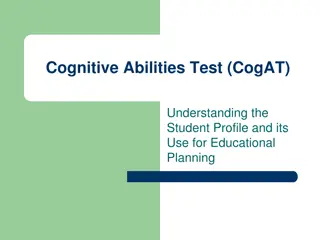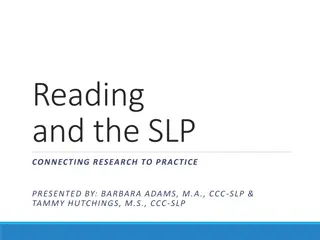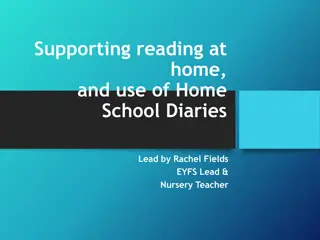Student Engagement Impact on Reading Scores in South Africa
This study delves into the correlation between student engagement and 4th-grade reading scores in South Africa, exploring behavioral, emotional, and cognitive engagement aspects to enhance educational outcomes.
Download Presentation

Please find below an Image/Link to download the presentation.
The content on the website is provided AS IS for your information and personal use only. It may not be sold, licensed, or shared on other websites without obtaining consent from the author.If you encounter any issues during the download, it is possible that the publisher has removed the file from their server.
You are allowed to download the files provided on this website for personal or commercial use, subject to the condition that they are used lawfully. All files are the property of their respective owners.
The content on the website is provided AS IS for your information and personal use only. It may not be sold, licensed, or shared on other websites without obtaining consent from the author.
E N D
Presentation Transcript
STUDENT ENGAGEMENT AND READING SCORES IN SOUTH AFRICA A MEDIATION ANALYSIS KERWIN FORTUNE
ORDER OF PRESENTATION ORDER OF PRESENTATION 1. Background 2. What is Engagement? 3. The Model 4. Results 5. Conclusion
1. BACKGROUND 1. BACKGROUND Educational psychologists suggest that highly engaged students will perform better on test scores, have higher attendance rates and be less at risk of dropping out prematurely. This study aims to test the validity of these hypotheses by applying data and exploring the effect of engagement on 4thgrade reading scores in South Africa.
2. WHAT IS ENGAGEMENT? 2. WHAT IS ENGAGEMENT? The American Heritage College Dictionary defines engagement as [being] actively committed ; to be engaged is to involve oneself or become occupied; to participate (a definition based on behaviour).
2. WHAT IS ENGAGEMENT? 2. WHAT IS ENGAGEMENT? The educational psychology literature suggests there are three broad classes of engagement, namely: 1. Behavioural Engagement 2. Emotional Engagement 3. Cognitive Engagement
2.1. Behavioural Engagement 2.1. Behavioural Engagement In terms of involvement - Klem and Connell (2004) Intensity of concentration of students Time spent on work assigned Ability of the student to stay on task Positive conduct Fredericks, et al (2004) Following the rules Respecting teachers Not cutting class and/or disrupting other learners Student Participation Finn (2003) In school-related activities i.e. sports, societies, school governance etc.
2.2. Emotional Engagement 2.2. Emotional Engagement Refers to student s non-cognitive reactions in the classroom. Influenced by: Fredericks, et al (2014) Enthusiasm Curiosity Optimism towards school work Finn and Voekl (1993) How students identify with the school i.e. do students feel like they belong. Do they feel their presence adds value
2.2 Emotional Engagement Klem & Connell (2004) Clear linkages to the reaction to challenge concept How do students respond to unexpected challenges faced on a daily basis?
2.3. Cognitive Engagement 2.3. Cognitive Engagement Fredericks, et al (2014) Draws on the idea of investment; incorporates thoughtfulness and willingness to exert the effort necessary psychological investment in learning How do students set goals, plan and organise study efforts? Do they seek help if needed? Do they actively monitor their comprehension? strategic (self-regulating) learning Difficult to measure [cognition]
3. THE MODEL 3. THE MODEL Engagement index constructed based on the degree of agreement with seven key statements: 1. 2. 3. 4. 5. 6. 7. I like what I read about in school My teacher gives me interesting things to read I know what my teacher expects me to do I think of things not related to the lesson My teacher is easy to understand I am interested in what my teacher says; and My teacher gives me interesting things to do Source: PRE-PIRLS (2011)
METHODOLOGY METHODOLOGY CAUSAL MEDIATION ANALYSIS CAUSAL MEDIATION ANALYSIS The goal of such an analysis is to investigate alternative causal mechanisms by examining the roles of intermediate variables that lie in the causal paths between the treatment and outcome variables.
CAUSAL MEDIATION ANALYSIS CAUSAL MEDIATION ANALYSIS The aim is to understand if and to what extent the effect of a treatment variable T, on an outcome variable Y, is mediated through a third variable M M T Y Source: Grotta & Bellocco (2013)
CMA: Key Assumptions CMA: Key Assumptions
CMA: Hicks and CMA: Hicks and Tingley Tingley (2011) (2011) 2 stage regression analysis The product of the coefficient on the treatment variable in the first specification and the coefficient on the mediator in the second specification produce the average causal mediated effect (ACME)
STUDENT ENGAGEMENT AND STUDENT ENGAGEMENT AND READING SCORES READING SCORES Treatment(s) Safety and Belonging Mediator Student Engagement Outcome Reading Score Limitations
4. RESULTS 4. RESULTS Safety Safety (1) (2) (3) (4) Student Engagement Reading Test Score Student Engagement Reading Test Score Dependent Variable: Student Engagement 0.302*** (0.027) 0.154*** (0.018) High Sense of Safety 0.790*** (0.052) 0.332*** (0.043) 0.702*** (0.496) 0.206*** (0.032) ACME 0.239*** (0.027) 0.108*** (0.014) Direct Effect 0.332*** (0.045) 0.206*** (0.031) Total Effect 0.571*** (0.052) 0.314*** (0.035) % of Total Effect Mediated 41.9 34.8 Controls No No Yes Yes Constant -0.499 -0.063 -0.644 -0.335 Observations 12851 12851 12851 12851 R-squared 0.141 0.123 0.1992 0.497
RESULTS RESULTS Safety by test language Safety by test language African Language Schools English/Afrikaans Language Schools (1) (2) (3) (4) Dependent Variable Student Engagement Reading Test Score 0.143*** (0.019) 0.267*** (0.358) Student Engagement Reading Test Score 0.228*** (0.034) 0.135*** (0.049) Student Engagement High Sense of Safety 0.735*** (0.559) 0.540*** (0.075) ACME 0.105*** (0.016) 0.267*** (0.035) 0.372*** (0.039) 28.3 0.124*** (0.024) 0.138*** (0.048) 0.262*** (0.054) 47.2 Direct Effect Total Effect % of Total Effect Mediated Controls Constant Observations R-squared Yes -0.699 11160 0.196 Yes -0.521 11160 0.252 Yes -0.644 1691 0.201 Yes 0.000306 1691 0.574
RESULTS RESULTS Sense of belonging Sense of belonging (1) (2) (3) (4) (5) (6) Student Engagement Reading Test Score Student Engagement Reading Test Score Student Engagement Reading Test Score Student Engagement 0.299*** (0.027) 0.163*** (0.018) 0.146*** (0.018) Strong Sense of Belonging 0.718*** (0.052) 0.362*** (0.041) 0.613*** (0.047) 0.162*** (0.029) 0.382*** (0.034) 0.106*** (0.028) ACME 0.215*** (0.024) 0.100*** (0.015) 0.055*** (0.009) Direct Effect 0.361*** (0.042) 0.162*** (0.029) 0.107*** (0.026) Total Effect 0.577*** (0.051) 0.262*** (0.033) 0.163*** (0.030) % of Total Effect Mediated 37.4 38.3 34.1 Controls No No Yes Yes Yes Yes Constant -0.408 -0.058 -0.528 -0.290 -0.714 -0.356 Observations 12851 12851 12851 12851 12851 12851 R-squared 0.123 0.128 0.176 0.494 0.226 0.498
5. Sensitivity Analysis 5. Sensitivity Analysis [ ] addresses the related problem of estimating direct and indirect effects when the causal effect of the treatment (T) on an outcome (Y) is mediated by intermediate variables (M), and in particular when confounders (U) of the mediator outcome relationships are themselves affected by the treatment (Daniel, et al., 2011: 480).
Sensitivity Analysis Sensitivity Analysis
Sensitivity Analysis: g Sensitivity Analysis: g- -Formula Formula (1) (2) g-Formula Computation ACME Dependent Variable High Sense of Safety High Sense of Safety 0.207*** (0.011) 0.314*** (0.035) Total Causal Effect 0.159*** (0.011) 0.206*** (0.031) Natural Direct Effect 0.049*** (0.003) 0.108*** (0.014) Natural Indirect Effect % of Total effect mediated 23.7 34.4
5. Conclusion 5. Conclusion The results show that engagement does indeed have both a direct and indirect effect on 4th Grade reading scores in SA with the magnitudes differing by treatment Further research: Try and find data that captures teacher reported engagement Explore further with teacher/school level variables as they are important from a policy perspective
